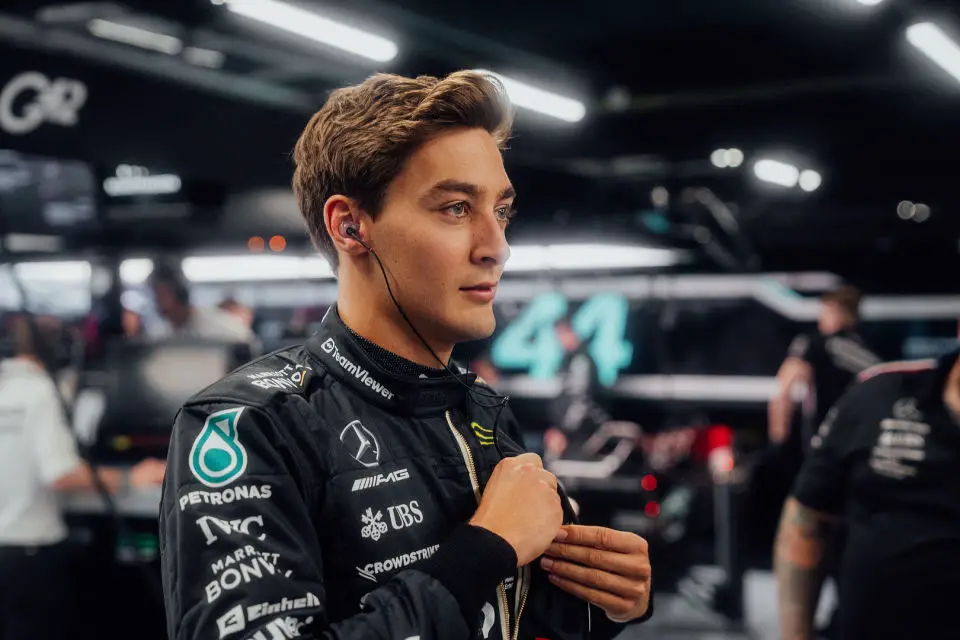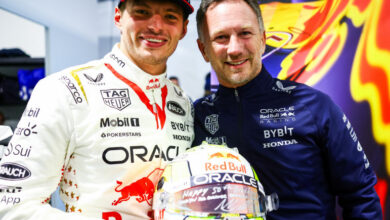Lewis Hamilton’s Strategy Ends in DNF at Qatar Grand Prix: An Unforeseen Turn of Events
Lewis Hamilton’s carefully crafted strategy for the Qatar Grand Prix came to an unexpected end with his DNF. His journey from plotting a comeback in the Sprint race to an unfortunate collision in the Grand Prix highlights the unpredictability of Formula 1.
Key Takeaways:
- Hamilton’s Radio Hint and Qualifying Struggle: Hamilton hinted at his determination with his quote “Never over ’til it’s over” during the Sprint race. He faced challenges in qualifying, ending up in P12 after exceeding track limits, indicating a tough start to the race weekend.
- Recovery in Sprint Race, Promising Start in Grand Prix: Despite starting on medium tires, Hamilton made a remarkable recovery during the Sprint race, climbing from P12 to P5. His P3 start in the Grand Prix showed promise, reflecting the potential of the W14 Mercedes car.
- Collision and DNF: Hamilton’s Grand Prix strategy was disrupted by an early collision with teammate George Russell at Turn 1, leading to a DNF. Russell, despite the crash, managed to finish P4, showcasing resilience and adaptation to race conditions.

Lewis Hamilton’s weekend at the Qatar Grand Prix was a tale of highs and lows, encapsulating the essence of Formula 1’s unpredictability. The British driver’s journey from plotting a strategic comeback in the Sprint race to an unfortunate collision in the Grand Prix serves as a reminder of the sport’s ever-present element of surprise.
Hamilton, known for his resilience and strategic acumen, faced a setback during the chaotic qualifying session. His comment, “I don’t feel like at this track we need to have track limits,” served as a premonition to his own challenges, as he exceeded track limits and qualified in P12. This initial struggle set the stage for a weekend of determined racing.
In the Sprint race, Hamilton opted for the medium tire set, contrasting with teammate George Russell’s choice of softs. This decision initially seemed disadvantageous, but Hamilton’s strategic acumen shone through. The deployment of safety cars early in the race did little to aid his progress. However, as the race unfolded, the medium tires proved advantageous, allowing Hamilton to make a significant climb in the standings.
Hamilton’s comment over the radio, “It’s never over until it’s over,” captured his fighting spirit. This was further echoed by team boss Toto Wolff’s response, highlighting the team’s belief in Hamilton’s potential on race day.
The optimism for the Grand Prix was palpable, with Hamilton starting in a promising P3 position. The pace displayed by the W14 Mercedes on Saturday hinted at a potential podium finish or even a win. However, the unpredictability of Formula 1 struck again. Hamilton’s plan to attack and stay consistent was cut short by the collision with Russell at Turn 1, a moment that changed the course of the race for Mercedes.
Despite the setback, Hamilton’s teammate Russell demonstrated remarkable resilience. Recovering from the early crash, Russell managed to secure a P4 finish, underlining the competitive nature of the Mercedes team.
Lewis Hamilton’s experience at the Qatar Grand Prix serves as a stark reminder of the volatile nature of Formula 1. It underscores the importance of strategy, adaptability, and the sheer unpredictability that makes the sport so captivating. As the season progresses, both Hamilton and Mercedes will undoubtedly look to bounce back, showcasing the relentless spirit that defines Formula 1 racing.



